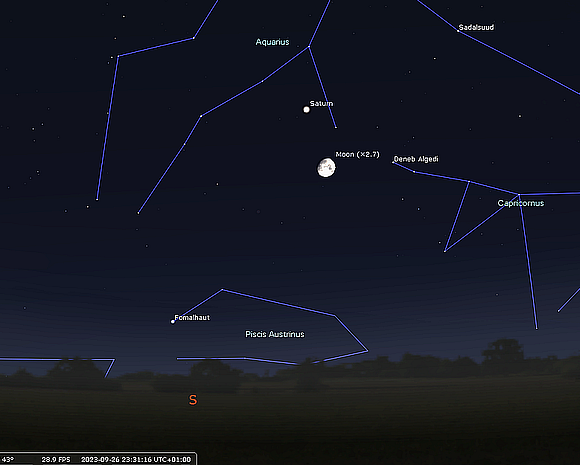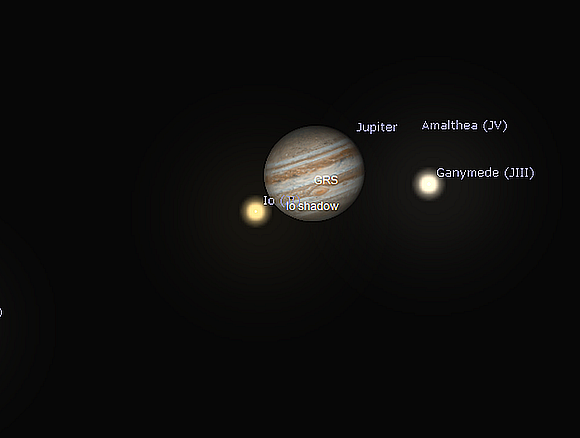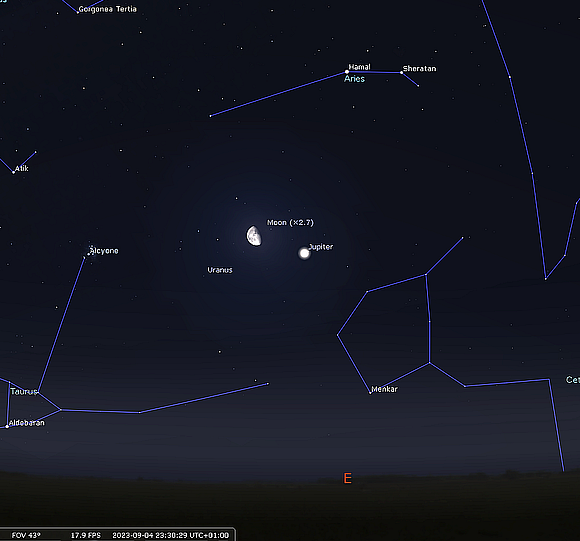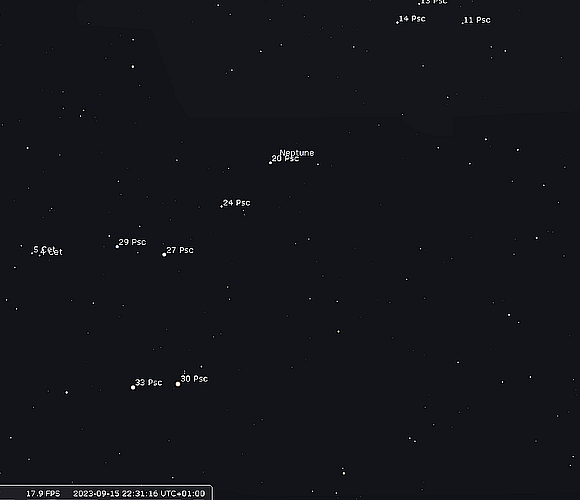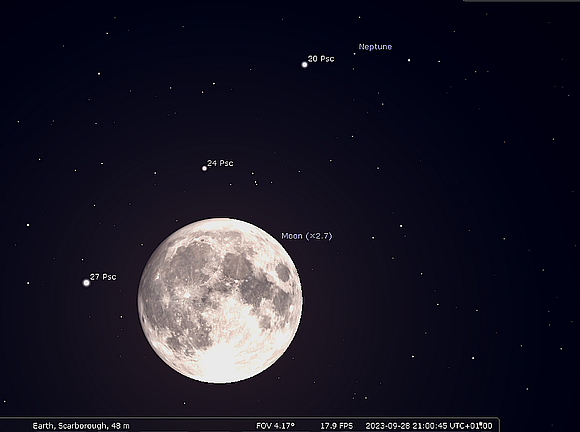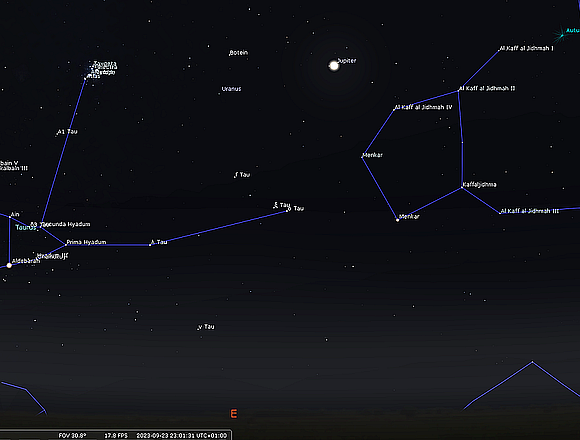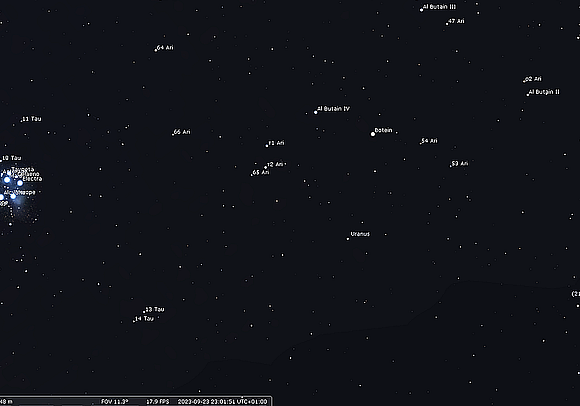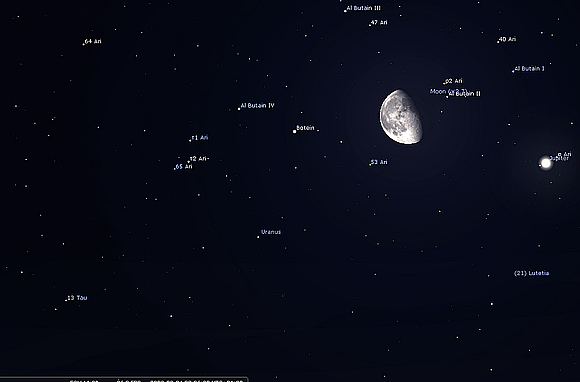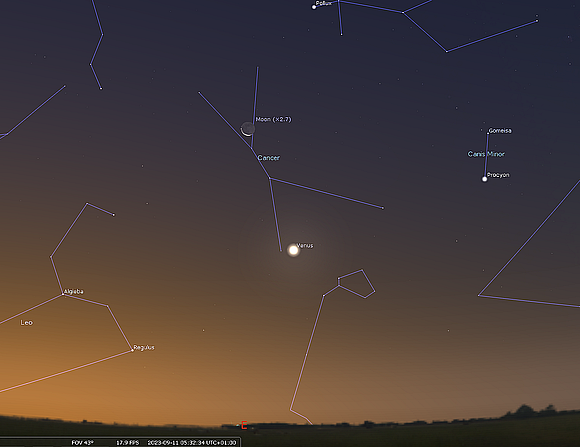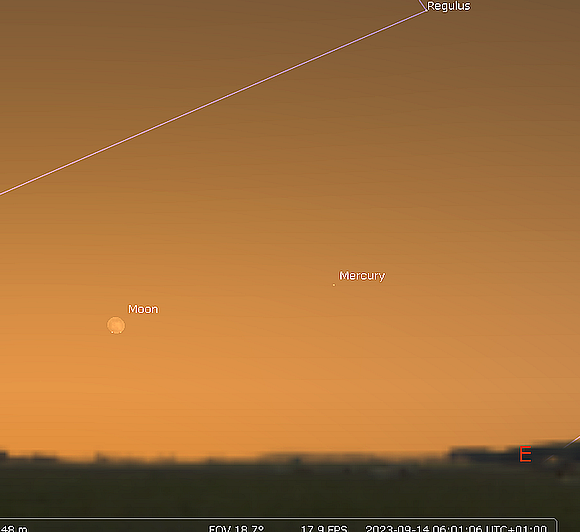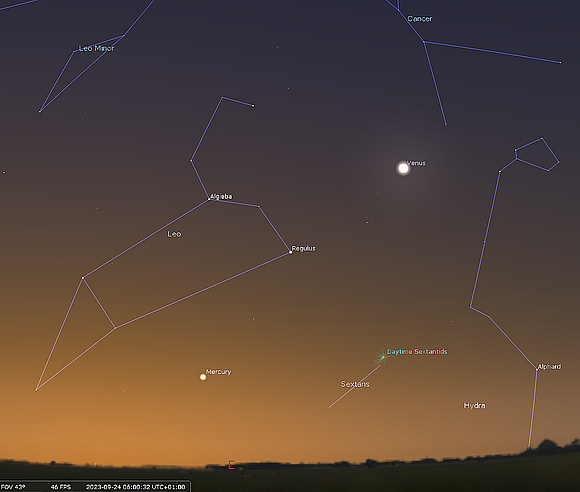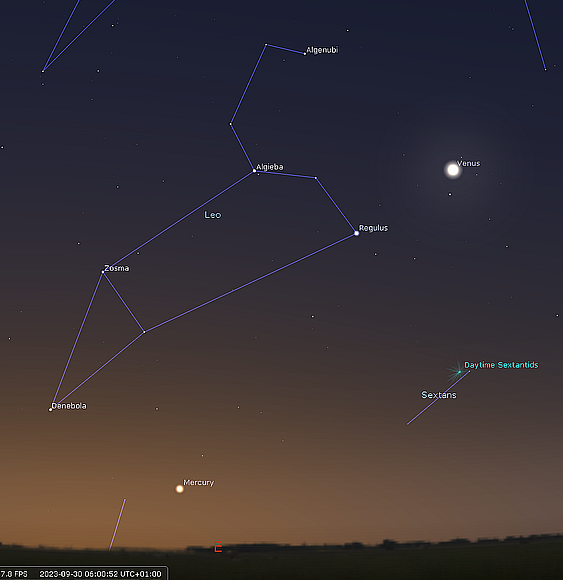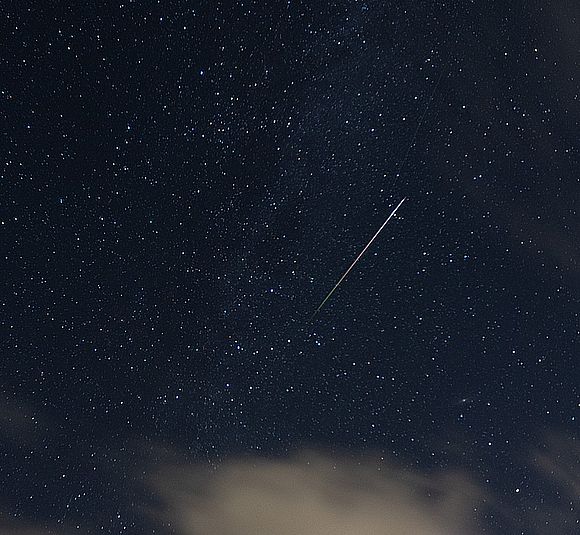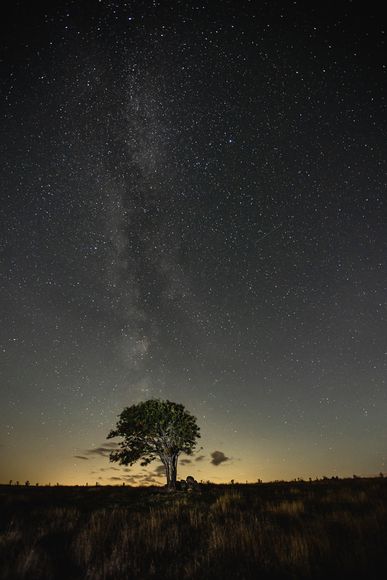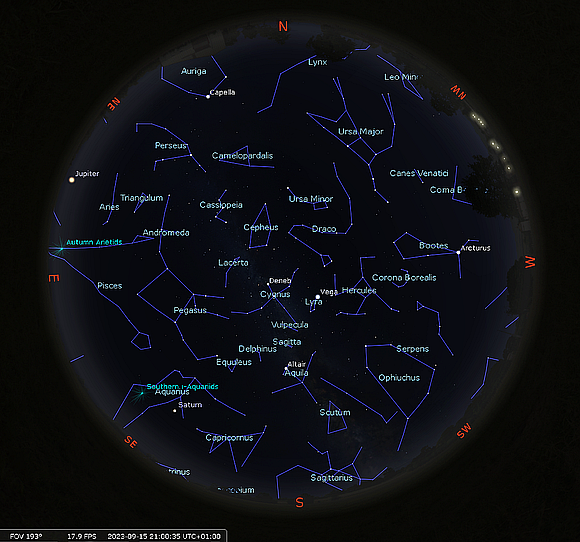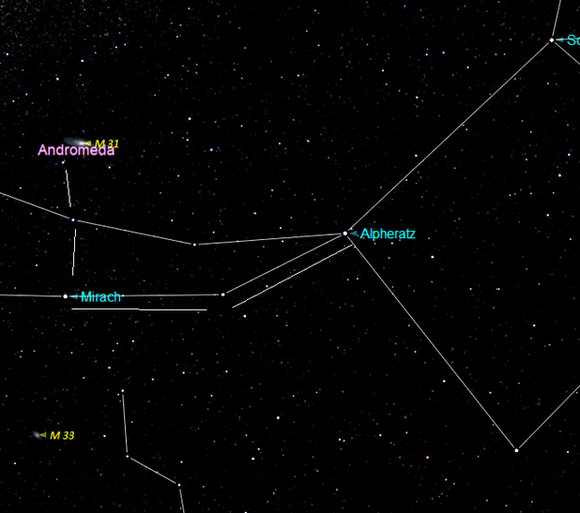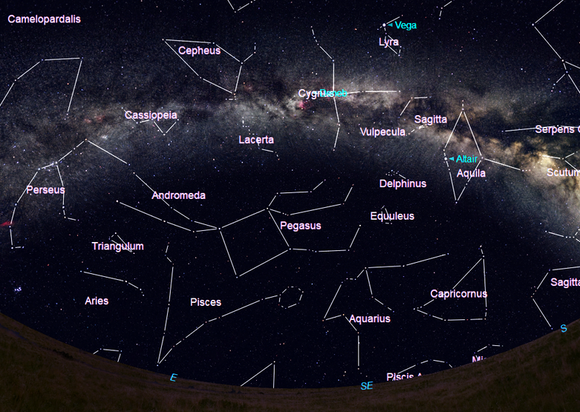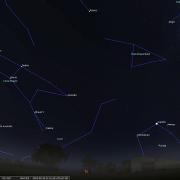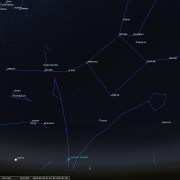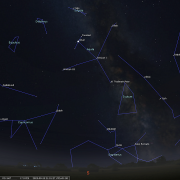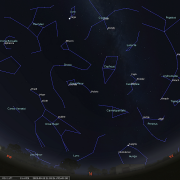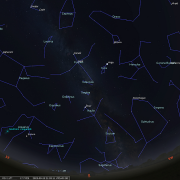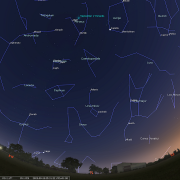In this month's Sky Notes:
- Planetary Skylights
- September Meteors
- Autumnal Equinox
- September Night Sky
- September 2023 Sky Charts
Planetary Skylights: A Brief Guide to September's Night Sky
Saturn is better placed in the late evening sky. Jupiter slowly makes progress but follows Saturn by over an hour. Uranus and Neptune are visible as telescopic objects with Neptune at opposition. Mercury has a fine morning apparition, whilst Venus lights up the dawn sky.
 Saturn rises by 20:30hrs as September starts and will already be well above the horizon as twilight falls by the months end. Saturn is currently residing amongst the faint stars of southern Aquarius low to the southeast and 11 degrees below the celestial equator. It is slowly gaining in declination but won't cross into the northern half of the sky until 2026 when it will become far better placed for observation from these shores. Attaining a magnitude of +0.42, the creamy white hue of Saturn will appear reasonably conspicuous in a region of the sky devoid of brighter stars.
Saturn rises by 20:30hrs as September starts and will already be well above the horizon as twilight falls by the months end. Saturn is currently residing amongst the faint stars of southern Aquarius low to the southeast and 11 degrees below the celestial equator. It is slowly gaining in declination but won't cross into the northern half of the sky until 2026 when it will become far better placed for observation from these shores. Attaining a magnitude of +0.42, the creamy white hue of Saturn will appear reasonably conspicuous in a region of the sky devoid of brighter stars.
Through the eyepiece Saturn is a glorious sight, although the orientation of the ring system is less favourable than a few years ago, the rings currently tilted by 9 degrees. This will increase by one degree by December before closing again, with the next ring plane crossing occurring in 2025. Under good seeing conditions typical 100mm (4") scopes will show the outermost ring (ring A) and the broader ring B on the inside. Instruments of 150mm (6") and above will be required to detect the Cassini division, the major gap between ring A and B, although this is becoming increasingly difficult as the rings close. Saturn has many moons (at least 80), most of which are small, but there is a clutch of 'good sized' moons and of course Titan, Saturn's largest moon visible in all telescopes and larger binocualars as a speck of light nearby. On September 26/27th Saturn resides three degrees above the waxing Moon.
 Jupiter follows Saturn into the late evening sky by 90 minutes or so, and by mid-month will be readily visible around 21:45hrs low in the ENE. Jupiter will have climbed to over 30 degrees in elevation by 01:00hrs and by dawn is around 50 degrees, well clear of horizon murk! Residing in Aries, Jupiter is gaining in altitude each year now, affording steady seeing for observers in more northern latitudes. At magnitude -2.68 Jupiter is far brighter than Saturn - the other major planet visible in the night sky and only Venus in the dawn sky outshines it. Jupiter reaches its first stationary point on September 4th and then starts tracking in retrograde motion (east to west) through Aries.
Jupiter follows Saturn into the late evening sky by 90 minutes or so, and by mid-month will be readily visible around 21:45hrs low in the ENE. Jupiter will have climbed to over 30 degrees in elevation by 01:00hrs and by dawn is around 50 degrees, well clear of horizon murk! Residing in Aries, Jupiter is gaining in altitude each year now, affording steady seeing for observers in more northern latitudes. At magnitude -2.68 Jupiter is far brighter than Saturn - the other major planet visible in the night sky and only Venus in the dawn sky outshines it. Jupiter reaches its first stationary point on September 4th and then starts tracking in retrograde motion (east to west) through Aries.
Through the eyepiece Jupiter’s oblate globe is a whopping 45 arc seconds in diameter, making for pleasing observations even with a small telescope. Look for the darker banding, great red spot, and attendant Galilean moons near the disk. As the Jovian system revolves quickly (Jupiter itself in less than 10 hours) cloud features and disposition of Galilean moons constantly evolve. Look for moon shadow transits on the disk of Jupiter, try Sept 21/22 when the GRS and Io shadow are visible before midnight. Overnight of Sept 4/5th look for a last Qtr. Moon in conjunction with Jupiter making for a fine sight.

 Neptune and Uranus are both now visible throughout late evening and overnight, although Neptune is better placed reaching opposition on Sept 19th. Neptune resides approximately 15 degrees eastwards of Saturn, below the faint loop of stars marking the western fish of Pisces in particular lambda Piscium (mag 4.5). The nearest 'bright' star is 5th magnitude 20 Piscium -30 arcminutes to the right of Neptune. Neptune itself is at 7th magnitude appearing as a tiny 2.4 arc-second disc through the eyepiece. To glimpse this, you will require at least a 100mm (4") aperture at 100x magnification but will be visible as a speck in humble 10x50 binoculars (if you know exactly where to look).
Neptune and Uranus are both now visible throughout late evening and overnight, although Neptune is better placed reaching opposition on Sept 19th. Neptune resides approximately 15 degrees eastwards of Saturn, below the faint loop of stars marking the western fish of Pisces in particular lambda Piscium (mag 4.5). The nearest 'bright' star is 5th magnitude 20 Piscium -30 arcminutes to the right of Neptune. Neptune itself is at 7th magnitude appearing as a tiny 2.4 arc-second disc through the eyepiece. To glimpse this, you will require at least a 100mm (4") aperture at 100x magnification but will be visible as a speck in humble 10x50 binoculars (if you know exactly where to look).
Bear in mind Neptune is very remote - over 4.3 billion Km (2.67 billion miles) or 28.9 AU. On the night of the 28th a supermoon accompanies Neptune into the sky. Look for the tiny disk less than 1-degree upper right of the Moon.
Uranus lies less than 6 degrees left of Jupiter and a similar distance to the right of the Pleiades star cluster. Uranus is mag +5.8 and is of a soft green/grey hue. Technically visible to the naked eye, an aperture of 75-80mm (3") is needed to spot the tiny 3.5-degree disk.
A waning Moon lies between Uranus and Jupiter on September 4/5th
 Venus makes a superb sight in the dawn sky for any early risers. The brilliant 'morning star' will certainly be conspicuous in the twilight almost due east, blazing forth at magnitude -4.4 magnitude. At the start of September Venus will lie almost 15 degrees up before the brightening new day does finally veil it to the naked eye. By the month's end Venus will be rising just after 03:00hrs and will eventually attain an altitude of 30+ degrees, well clear of murk and turbulent air. This will be a great opportunity to scrutinise Venus through a telescope. In the eyepiece Venus will exhibit a 24 % crescent phase spanning 40 arc-seconds and will be quite a sight. By the 16th Venus will attain greatest brilliance, around mag - 4.61. Look for the 1st mag star - Procyon to the right of Venus, but on the 11th a slender crescent Moon sits above the 'brilliant morning star' and west of it a day later.
Venus makes a superb sight in the dawn sky for any early risers. The brilliant 'morning star' will certainly be conspicuous in the twilight almost due east, blazing forth at magnitude -4.4 magnitude. At the start of September Venus will lie almost 15 degrees up before the brightening new day does finally veil it to the naked eye. By the month's end Venus will be rising just after 03:00hrs and will eventually attain an altitude of 30+ degrees, well clear of murk and turbulent air. This will be a great opportunity to scrutinise Venus through a telescope. In the eyepiece Venus will exhibit a 24 % crescent phase spanning 40 arc-seconds and will be quite a sight. By the 16th Venus will attain greatest brilliance, around mag - 4.61. Look for the 1st mag star - Procyon to the right of Venus, but on the 11th a slender crescent Moon sits above the 'brilliant morning star' and west of it a day later.
 Mercury has its best dawn apparition of the year this month, pulling rapidly out west of the Sun, reaching greatest elongation on Sept 22nd - some 18 degrees. Mercury goes through inferior conjunction on Sept 6th, before pulling away from the Suns glare. As with all morning apparitions, Mercury will be faintest at the start, brightening as the apparition progresses. By mid-month Mercury will lie just 5 degrees above the east horizon, and at magnitude +1.75 will be challenging to spot - even with binoculars. A very old Moon (in fact almost New) will be an equally challenging target approximately 5 degrees to the left of Mercury.
Mercury has its best dawn apparition of the year this month, pulling rapidly out west of the Sun, reaching greatest elongation on Sept 22nd - some 18 degrees. Mercury goes through inferior conjunction on Sept 6th, before pulling away from the Suns glare. As with all morning apparitions, Mercury will be faintest at the start, brightening as the apparition progresses. By mid-month Mercury will lie just 5 degrees above the east horizon, and at magnitude +1.75 will be challenging to spot - even with binoculars. A very old Moon (in fact almost New) will be an equally challenging target approximately 5 degrees to the left of Mercury.
By the 22nd however, and greatest elongation, matters have improved with Mercury shining at mag -0.3 and around 10 degrees above the east horizon. You will require a flat horizon to view any of the apparition, hills, buildings, trees etc should be off the menu on this front! By the end of September and into October Mercury will have brightened further still to mag -1.1 but will have dropped back to eight degrees above the horizon.
Mercury can be notoriously difficult to spot, until you do spot it! View around 45 minutes before Sunrise (around 06:00hrs BST). Use binoculars initially to sweep steadily above the east horizon. A typical 10x50 binocular field is 5-7 degrees. Once spotted, try with the naked eye. At mag -1 Mercury should be readily visible. Turn a telescope toward Mercury and with decent 'seeing', which is steadier at dawn than in the evening, you should see Mercury change rapidly in phase - from a larger crescent at the start of the apparition to a smaller gibbous phase by the end. A few subtle markings may be glimpsed.
Finally, there is another super-moon in September, the last one in a series of four that started in July. September’s full-Moon falls on the 28th. Neptune lies nearby (see Neptune)
September Meteors
There are no major noteworthy meteor showers in September; however you may spot a few Piscids which have two peaks: the 8th and the 21st. Rates are low, with only 6 or 7 per hour at best, barely more than sporadic levels. As with all meteor showers early morning viewing will be best. Moonlight will interfere slightly for the first peak on the 8th, but not the second date.
As for the Perseids, well, cloud hampered observations from these parts. We did manage to spot a few on the Saturday evening, with Mark luckily catching a fine example around 03:40hrs streaking down to the north horizon, but that was all. Richard Randle captured a fine image of a Perseid on the 12th at 23:25hrs
The Autumnal Equinox
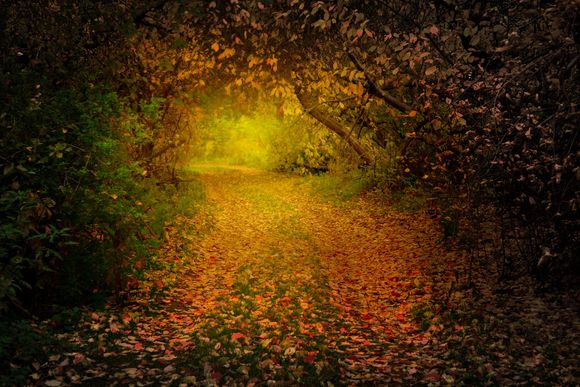
Autumn is rapidly approaching as nights draw in. Meteorological autumn commences on Sept 1st in the northern hemisphere, whereas astronomical autumn does not officially commence until Sept 21st - the date of the autumnal equinox. From our perspective the Sun re-crosses the celestial equator and retreats southwards, arcing ever lower above the south horizon. At an equinox the Earth's poles are not inclined toward the Sun but are parallel to it. Hours of daylight and darkness will be almost equal across the globe. As the northern hemisphere continues to tilt away from the Sun, evenings will rapidly draw in once again as we head through autumn and into winter, until the Sun reaches the lowest position on the ecliptic - the winter solstice - around December 21st.
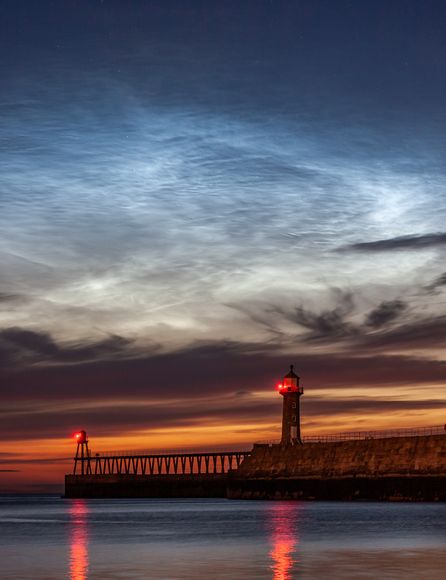
Noctilucent cloud - June 15th - 2021. Image Richard Randle
This summer has seen very few sightings of Noctilucent cloud, at least from the Whitby area. Perhaps the indifferent summer conditions have played a role. Whatever the reason we'll expect better next year!
September Night Sky
The Milky Way - a highlight of early Autumn night skies
Image - by WDAS member Richard Randle (Click for larger)
September is a month of change - summer to autumn, (a given for the month in which the autumnal equinox falls), but dependant on what sort of summer has gone before, it can feel as though September weather can represent everything from spring through to autumn and back again.
For astronomers, if skies are clear September is one of the best months in which to explore the night sky. Evenings are rapidly drawing in with most stars visible by 21:00hrs and nearly all deep sky objects apparent in the eyepiece by 22:00hrs. Should temperatures remain on the mild side, it can therefore be a real pleasure to be out observing. September is also a time for UK observers to take in the magical aspect of the Milky Way, when at its most conspicuous to the naked eye.
To the sky! - As dusk falls five stars are first to emerge; Arcturus, in the west, the “summer trio” of Vega, Deneb (both located overhead) and Altair – located midway up in the south, together with Capella low to the North. The celestial jigsaw puzzle is then completed over the next hour as the fainter stars. Look to the west to locate brilliant amber hue of Arcturus in constellation of Boötes. Upper left of the Herdsman, note the pretty starry circlet of Corona Borealis - the Northern Crown, with Alphecca or Gemma its lead star the centre stone of the tiara.
Two large rather ill-defined groups occupy the SW aspect of the sky. The figure of Hercules sprawls across the higher regions of the SW, a little above Corona. It is best identified by the ‘keystone’ asterism. Below Hercules the even larger and fainter outline of Ophiuchus extends down towards the SW. High in the WNW, the familiar outline of the Plough, part of Ursa Major - the Great Bear is well placed. Follow the natural curve of the handle to locate Arcturus and Boötes etc. Then utilise the ‘pointer’ stars in the bowl of the Plough to locate the pole star - Polaris, due north. Polaris marks the tail tip of the Little Bear - Ursa Minor. People sometimes assume the brilliant star currently twinkling above the north horizon as being the North star, it is in fact Capella in the circumpolar winter constellation of Auriga. The zenith (directly overhead) is occupied by the head of Draco, the body of which winds between the two bears.
Turn 180 degrees to due South, where Sagittarius - the Archer straddles the horizon. If skies are transparent look for the large asterism referred to as the ‘Teapot’, the outline of which resembles a more ‘angular’ type of pot slightly tilted as if pouring a cuppa! If you have a pair of binoculars or low powered telescope, spend some time exploring the magnificent star clouds and various nebulae located within Sagittarius. The summer ecliptic runs not far above the south horizon and along with Sagittarius much of the S - SE aspect is occupied by zodiacal constellations. Following the Archer are the stars of Capricornus - the Sea Goat. The aquatic theme continues low in the ESE with Aquarius - the Water Bearer and Pisces - the Fish, its inconspicuous stars meander down to and then back up from the east horizon. The planet Saturn currently resides in the lower reaches of Aquarius, whilst Jupiter dominates Pisces.
High overhead to the South, extending down to the SSE, the constellations of the ‘summer triangle’; Lyra, Cygnus and Aquila dominate. A short distance above Altair in Aquila, note the small arrow shaped group of Sagitta together with the close-knit group of Delphinus situated to its left. Delphinus is one pattern that with a little imagination does resemble the outline of a dolphin leaping out of water. It is sometimes bizarrely known as ‘Jobs coffin’. Climbing up from the NNE horizon the great hero Perseus stands proud, whilst the distinctive “W” pattern of Queen Cassiopeia, sits on her throne above his shoulder. The eastern aspect of the sky is dominated by just a few constellations, in particular the winged horse Pegasus, which stands 2-3 hand-spans above the horizon. It is best identified by “the great square”, four stars arranged thus and enclosing an area of sky seemingly devoid of naked eye stars. Between Pegasus and Perseus, the chained princess Andromeda, daughter of Cassiopeia, stretches. Situated within the borders of Andromeda, our “sister” galaxy can be glimpsed with the naked eye on clear moonless nights.
Below Andromeda sit two small constellations, Triangulum, below which lie the crooked line of stars marking Aries - the Ram. Along with the Andromeda galaxy and the Milky Way, the third spiral galaxy in our local group is in Triangulum -M33 (the other pinwheel galaxy in the sky), seen as a misty patch in binoculars or rich field telescopes. Finally, charging over the horizon in the ENE is Taurus the Bull, led by the exquisite open cluster of the Pleiades or Seven Sisters marking the bull's tail. The sight of the Pleiades reminds that Winter waits in the wings, but for the time being Autumn is about to take centre stage!
To locate the Andromeda galaxy, star hop along a well-spaced chain of stars extending eastwards away from the upper left-hand star (Alpheratz) of the Square of Pegasus, marking the main body of Andromeda. Two stars along this chain at a star called Mirach, turn northwards, passing a further two fainter stars. Lying next to the second of these you should notice an elongated wispy patch of light, the Andromeda galaxy, a spiral system like our own. It is easily seen with binoculars, however if the sky is sufficiently dark and transparent, it is visible to the naked eye, making it the most remote object detectable without optical aid, a staggering 2.6 million light years distant. If you are not sure use the “averted vision” technique, i.e. - don’t look directly at it, but slightly to one side.
By late September the Milky Way is well placed for observation. Having allowed your eyes time to adapt (15 mins) to the dark oasis you have located, the Milky Way should be noticeable as a ghostly river of light dissecting the sky in a NE to SSW direction. Follow this milky stream from where it rises in the NNE through the constellation of Auriga, sweeping up through Perseus and into the ‘W’ pattern of Cassiopeia, where it's worth dropping anchor spending time exploring the star fields and plethora of ‘misty knots’ visible through binoculars.
Moving through Cepheus, the Milky Way then crosses overhead directly through the long axis of Cygnus, the Swan (sometimes called the Northern Cross) highlighted by the summer triangle luminary; Deneb, marking the tail of the Swan. Here the Milky Way divides into two channels which flow either side of a 'darker, elongated island' midstream. Known as the ‘northern rift’ this is an intervening dust cloud approximately 4 thousand lights distant which partly obscures the stellar multitude beyond. Cascading down through Aquila, passing bright Altair, the Milky Way broadens before flowing into Sagittarius - straddling the SW horizon. In this direction nebulae and star clusters abound, rich pickings to keep the optical observer more than satisfied if skies are transparent. The galactic centre lies amidst the celebrated star clouds of Sagittarius, some 27000 light years away.
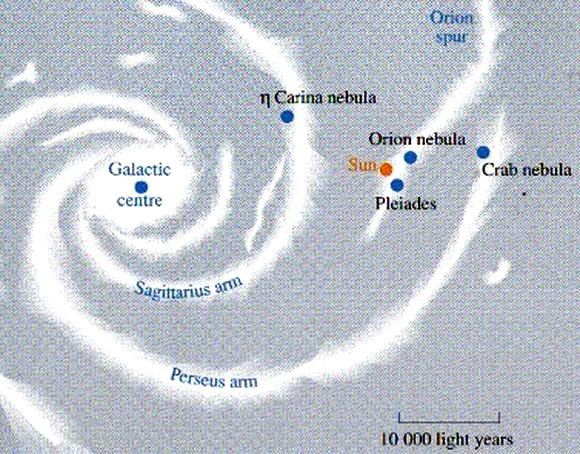
Our Suns location in the Milky Way
Revered by ancient civilizations as a divine water course or spiritual path, the true nature of the Milky Way has been understood for over a century. However, within the last few decades data obtained from across the electromagnetic spectrum from varied sources has reshaped our understanding of the galaxy. It would appear the Milky Way galaxy is not the classic multi-armed spiral with a central hub structure once thought; (like a Catherine wheel on bonfire night). Our galaxy is a barred spiral galaxy over 120,000 light years in diameter with just two major arms and several lesser ones. The central bar consists of stars orbiting in highly elliptical paths and is approximately 28000 light years in length, bulging at the centre. At the very centre lurks a massive black hole of some 4 million solar masses. Our Sun is located on the edge of a quite stellar neighbourhood midway between two major arms known as the Orion spur, some 26000 light years from the galactic centre. The arms themselves are approximately 1500 light years thick, the nearest sections of which lie some 6500 light years away.
Our stellar citadel is vast and may contain approximately 200 billion other suns and over a trillion planets (estimates vary), and yet all that accounts for just 6 percent of our galaxies mass, the rest taking the form of dark matter. Amongst the detritus of our hectic lifestyles, people rarely can, or are able to, afford time to fully appreciate the majestic and infinite starry sky. This month, make time and take a leisurely and awe-inspiring cruise down the Milky Way stream.
September Sky Charts.
Additional Image Credits:
- Planets and Comets where not otherwise mentioned: NASA
- Sky Charts: Stellarium Software and Starry Night Pro Plus 8
- Log in to post comments

